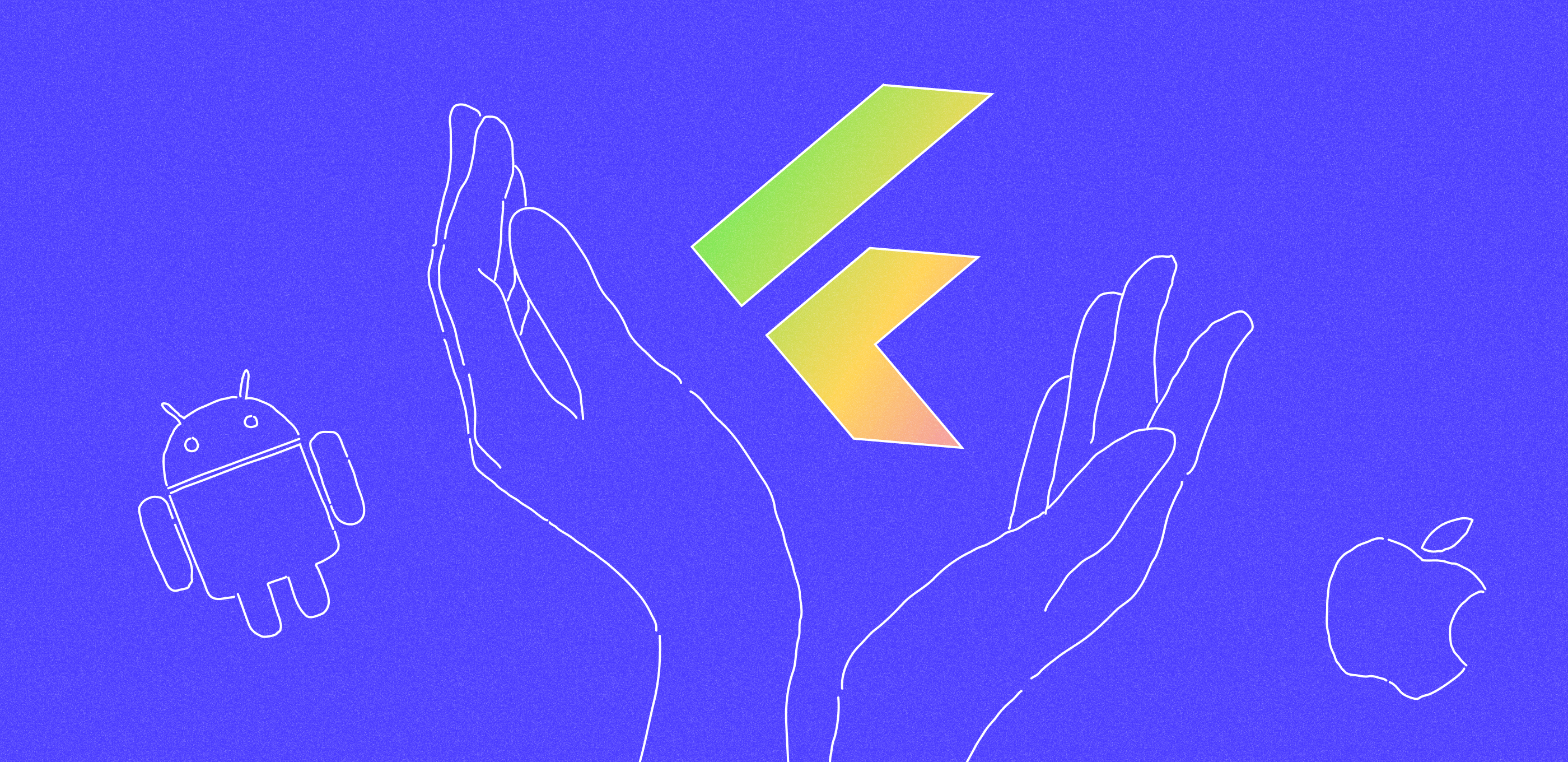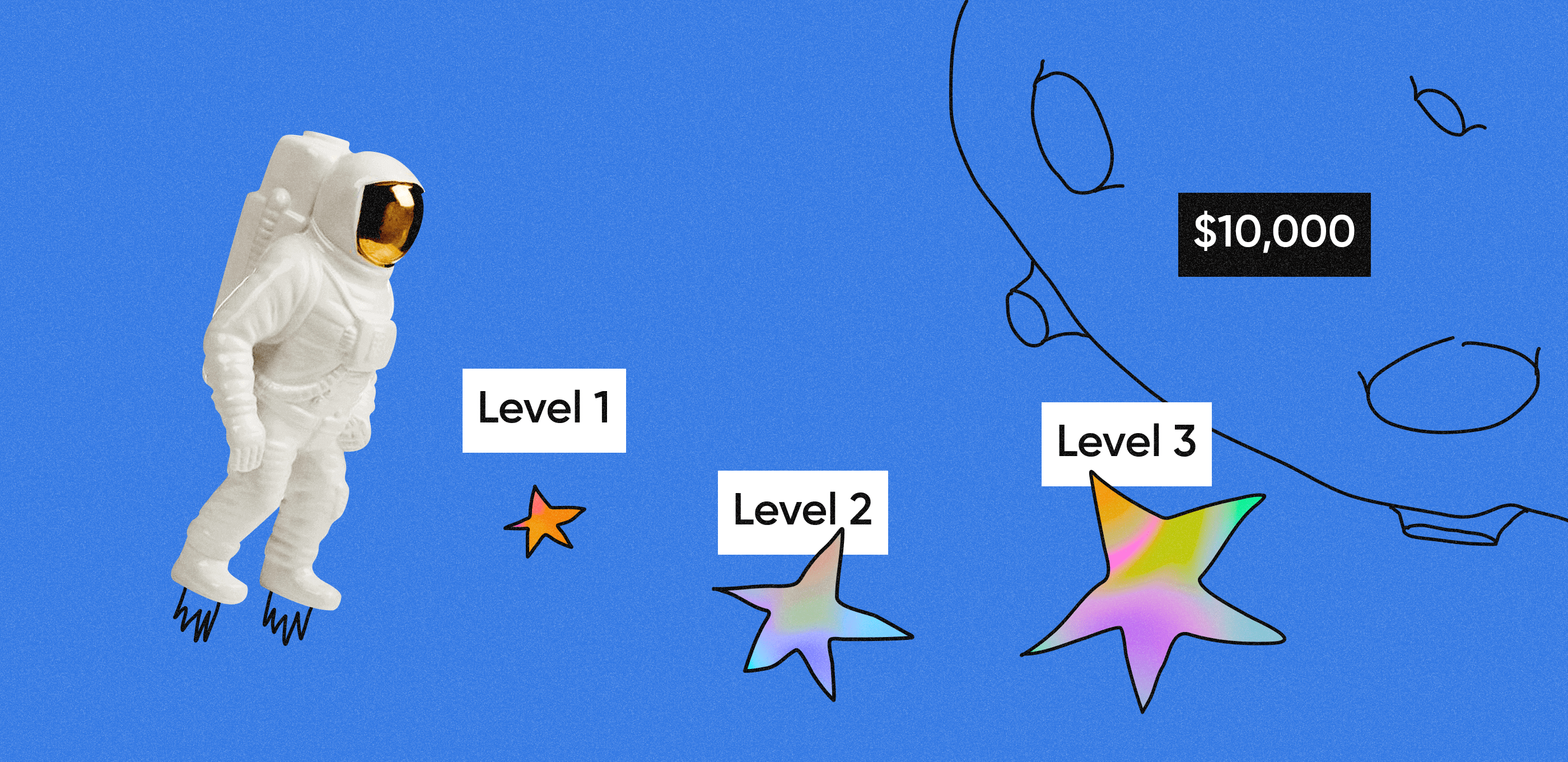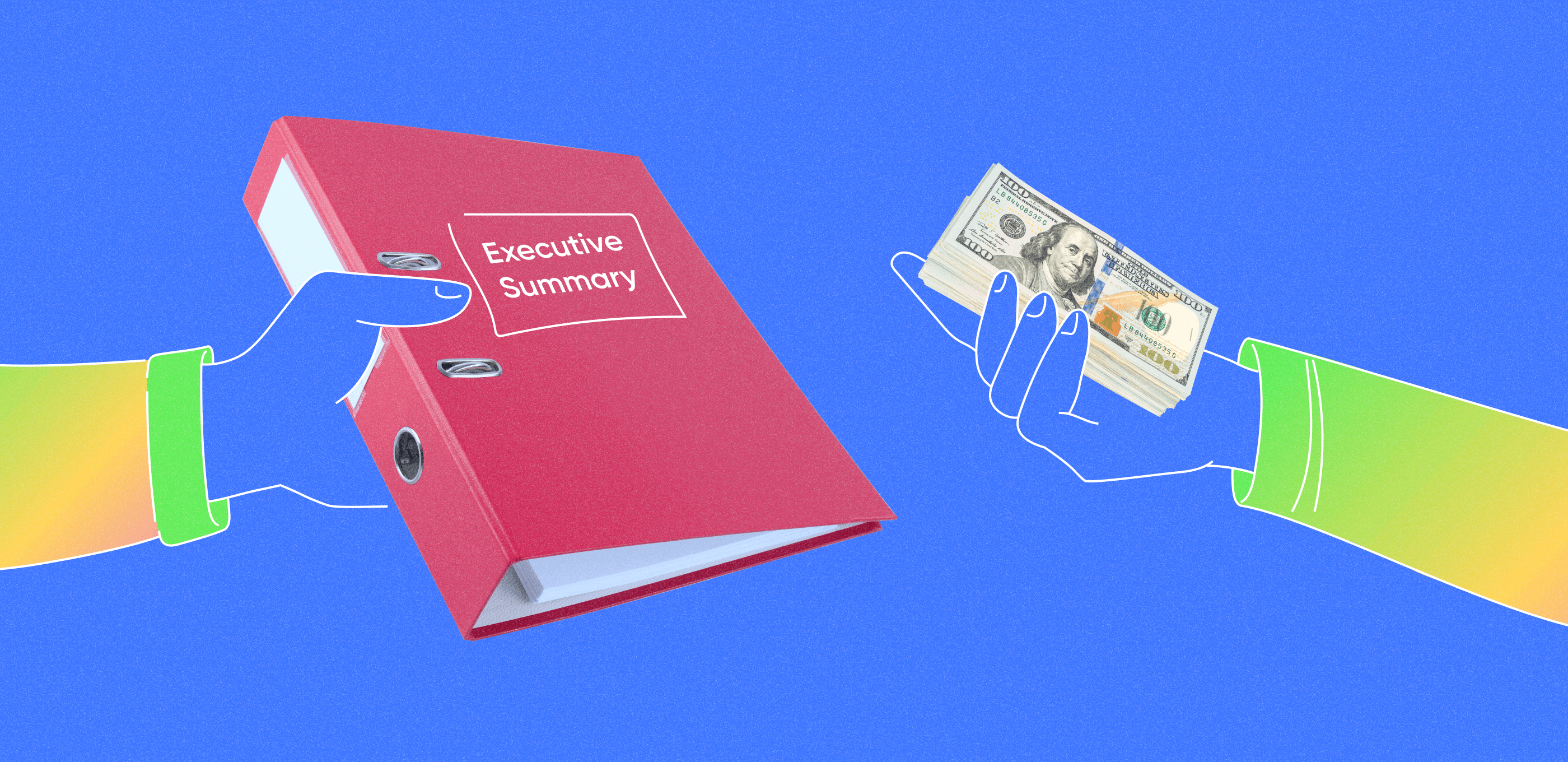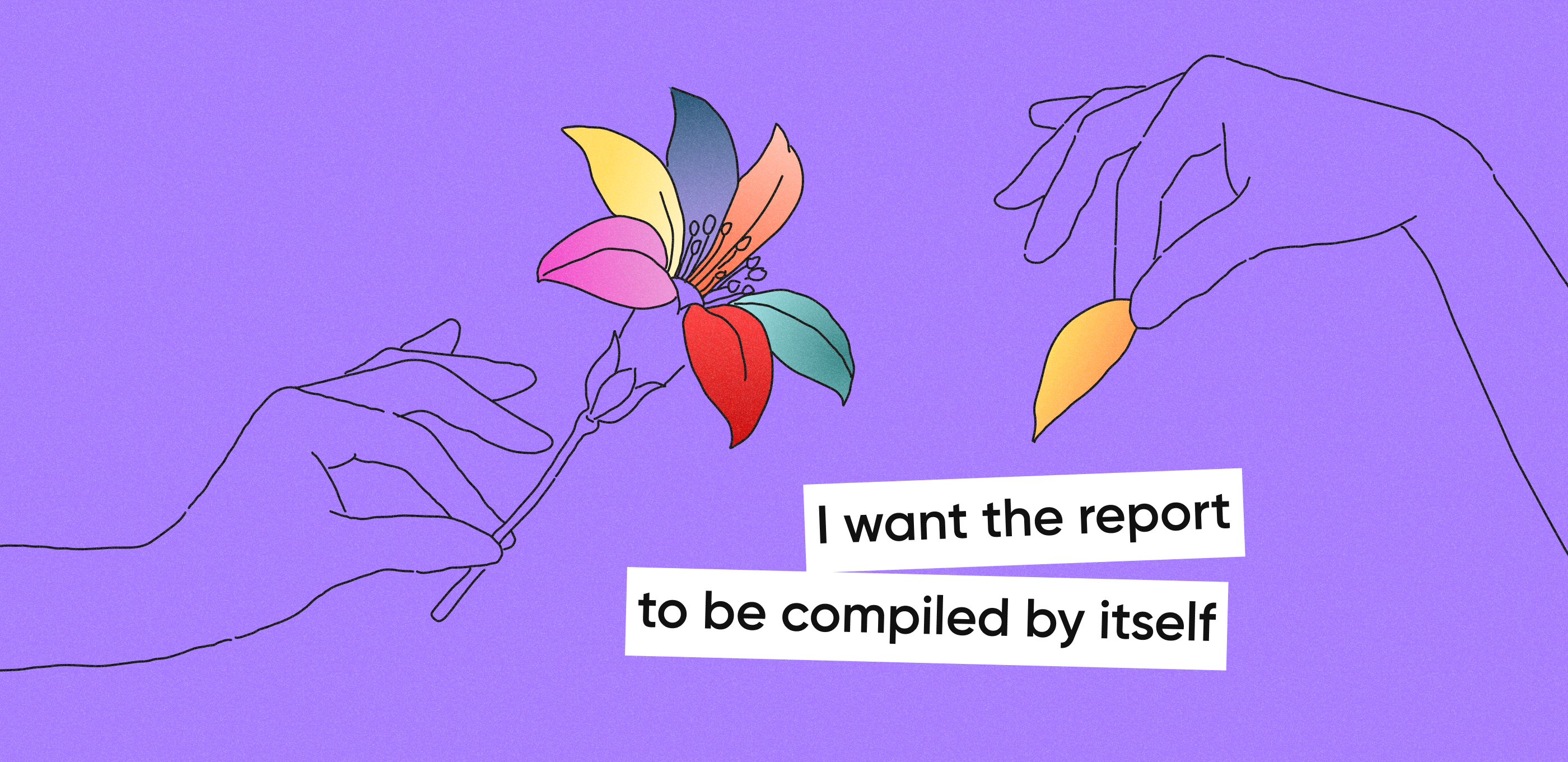Key Takeaways
-
- Flutter is a powerful application development framework with cross-platform capabilities.
- The framework features high performance, an expressive and customizable user interface, and an active developer community.
- Challenges of Flutter are limited native modules, potential application size, and the need to adapt to a unique UI development.
- Flutter’s advantages include rapid prototyping with the hot reload feature, cost-effective development, and a uniform design for different platforms.
What is Flutter?
Flutter is one of the popular cross-platform frameworks for app development. It is an open-source software development kit created by Google that allows you to build native-looking applications for all popular platforms — iOS, Android, Windows, Mac, Linux, and the web. For all these platforms, Flutter developers use a single codebase.
Cross-platform development significantly reduces time, effort, and costs of creating apps.
This makes Flutter an ideal choice for startup founders aiming to reach a diverse user base without breaking the bank.
Flutter uses a modern and expressive Dart programming language. Dart is fast and intuitive, offering a seamless experience for developers. Its Just-In-Time (JIT) compilation allows you to make real-time changes to the code, which makes the Flutter development process smoother.
What sets Flutter apart from many other development frameworks is its unique approach to building user interfaces.
Flutter uses widgets, basic building blocks for creating interactive and visually appealing UI.
With an extensive library of ready-made widgets and the ability to create custom ones, Flutter app development becomes much easier.
Another reason for Flutter’s growing popularity is its hot reload feature. It allows developers to instantly see the impact of changes to the code without having to recreate the entire project. This not only speeds up the development process but also encourages experimentation and creativity. The hot reload is a useful feature for startup founders looking to quickly iterate and refine their apps.
Flutter offers a unique combination of powerful tools, a flexible programming language, and cross-platform capabilities that make it an attractive choice for startups. But that wasn’t always the case, the framework has gone through several important stages of development, which we will talk about now.
Evolution of the Flutter framework
Flutter’s evolution has been characterized by rapid growth, constant improvements, and an unwavering commitment to staying at the forefront of application development. To evaluate its current state, it is necessary to trace the evolution of this innovative framework back to its roots.
In 2015, Flutter was introduced as Sky. It was primarily focused on achieving a high level of performance and rendering consistency. It targeted Android operating systems and aimed for an impressive 120 frames per second. Smooth animations and a consistent user experience laid the foundation for what we now know as Flutter, a framework that still prioritizes performance and UI excellence.
In May 2017, Flutter was first presented to the world at the Google I/O developer conference. The development kit focused on stabilizing its core features and expanding its widget library. Despite the relative newness of the framework, its potential was obvious, and the developer community began to take notice.
In December 2018, Google announced the release of Flutter 1.0. Flutter took a significant step forward by going open source. The release signified that the framework had reached a high level of stability. Flutter improved its integration with popular IDEs like Visual Studio Code and Android Studio, making it more developer-friendly. The widget library continued to evolve, offering new widgets and animations.
Flutter 2.0
March 2021 saw the release of Flutter 2.0. Perhaps the most significant change was the official introduction of support for web and desktop applications. Specifically, Flutter 2.0 introduced beta support for creating desktop apps on macOS, Windows, and Linux, further expanding its cross-platform capabilities. The framework has become more adaptable to each platform’s specific design language. This made it easier to create Flutter apps that look like native apps on an even wider array of devices.
Flutter 3.0
In February 2022, Flutter 3.0 was released. This release introduced null safety, which was one of the largest changes made to Dart. Null safety is a feature that helps developers avoid null reference errors. This makes code more reliable and easier to maintain. In addition, Flutter 3.0 introduced other improvements, including foldable phone support and a casual game toolkit for game developers. It also made some changes to the API, including the removal of deprecated API and the replacement of page transitions with ZoomPageTransitionsBuilder.
In the next sections of this article, we will delve deeper into the pros and cons of using Flutter app development for your projects.
Benefits of using Flutter for app development
The innovative UI framework from Google offers a wide range of benefits. Let’s discuss why Flutter app development can be an attractive choice.
Accelerating development
Creating a Flutter app usually takes around 4–5 months. Flutter’s widget-based technology allows developers to apply object-oriented programming to any element, which speeds up the development process. Fast development is also achieved by the hot reload feature that allows developers to make changes in real time, making it easier to make iterations and quickly rebuild the app.
Developing for multiple platforms
With Flutter, developers can create a single codebase and use it across multiple platforms (Android, iOS, desktop, and the web). This not only streamlines development but also significantly reduces expenditures by cutting down both initial development and ongoing support costs. With the help of Flutter, startup founders can efficiently realize their vision while optimizing the project’s financial resources.
Achieving native-like performance
Providing native-like performance is a critical benefit. Unlike some JavaScript-bridge frameworks, Flutter provides a responsive user experience without sacrificing performance. It is as good as its closest competitor, React Native, in terms of efficiency. For product owners, this means that their software not only looks and feels like a native app, but also runs smoothly and responsively. This increases user satisfaction and engagement.
Creating attractive and customizable UI
Flutter allows for the creation of visually stunning and highly intuitive user interfaces. Developers can create aesthetically pleasing and customizable designs that meet the specific branding and user experience requirements of the product. In addition, Flutter ensures that animations run smoothly, which adds an extra level of appeal to the app.
Benefiting from solid support
The reliable support and continuous development of Flutter come from Google’s unwavering commitment to the framework. Google is prompt in fixing any bugs and issues. In addition, Flutter has a thriving community of developers who contribute to its growth and provide valuable resources and handy code samples. As a product owner, you can rest assured that your app will benefit from both Google’s dedicated support and the collective knowledge of the Flutter community.
Challenges of using Flutter for app development
While Flutter app development offers many benefits, there are also some challenges that developers may face. Here are some of the issues to be aware of when using Flutter.
Different from typical UI development experience
Flutter’s widget-based UI development approach may require teams to adapt to a different way of building user interfaces. This can pose challenges during web and mobile app development, especially for those who are new to the framework.
Limited native functionality
One of the cons of Flutter is its limitations in accessing certain native functionality. A Flutter team may need to resort to native code for specific use cases, such as when targeting platforms like tvOS, watchOS, Android Auto, or CarPlay.
May not be suitable for complex apps
While Flutter’s custom widgets and rich animation features can enhance the user experience, they may also introduce complexity to the app development process. For some highly complex apps, this could potentially lead to longer development timelines. Moreover, although Flutter is known for its high performance, complex animations can occasionally cause performance issues.
Flutter is still developing
Flutter is relatively new, and the number of available libraries and tools for it is still limited compared to more established development kits. Frequent updates of the framework may require developers to adapt their code to maintain compatibility with the latest versions. Plus, Flutter for Web is still in beta, which means that it is not fully stable, tested, or supported. A Flutter team may encounter some bugs and limitations when using Flutter for web development.
Despite the challenges, Flutter is a popular choice due to short development times, high performance, attractive UI, and strong community support.
Knowing the pros and cons, you can make an informed decision on whether to use Flutter app development services or not. To make it clearer, let’s explore a couple of examples.
When to use Flutter for development
Flutter development has garnered a lot of attention due to its versatility, broad capabilities, and cross-platform nature. If you are now considering whether to use Flutter in your project, have a look at the situations in which it is typically used. We can point out several scenarios that make it a compelling choice.
Case 1: Cross-platform mobile development
Meet Emily, a passionate product owner committed to making eco-friendly living accessible to everyone. Emily, the founder of the startup EcoMate, had the brilliant idea to create an app that would help users take care of nature. She wants her app to be accessible to as many users as possible. Emily plans to create a single app that will work on both iOS and Android, so she chooses Flutter for cross-platform mobile development.
Emily and her team used Flutter’s architecture to create the app. Flutter’s widget-based design allows for a beautiful and customizable interface. The hot reload feature makes the development flexible and responsive to user feedback. EcoMate is now launched on the App Store and Google Play. It provides a stable and highly efficient experience on both platforms, and users love the simple interface and engaging content.
You can also read about how we created an eco-app at Purrweb.
Case 2: Elevating user experience with Flutter
Meet James, the head of a development team at Artscape, a startup specializing in digital art. James wants to create a groundbreaking NFT marketplace. He imagines a user-friendly and visually appealing NFT marketplace available to collectors and artists across multiple platforms. He aims to provide a consistent experience on both mobile devices and PCs, as well as create a web app.
James chose Flutter because its expressive and customizable user interface features perfectly match the artistic and innovative nature of NFTs. The app allows users to explore, buy, and sell NFT art, participate in auctions, and interact with the NFT community. The marketplace has been recognized for its design and immersive experience.
Our company also follows the trends in the financial industry. If that sounds interesting, read about how we created a cryptocurrency wallet.
Both Emily and James are fictional characters, each with their own idea and its realization. But they are united in their choice of Flutter because it helps them create cool apps that meet their demand.
To sum up: if you want to speed up development and use a single code base, consider Flutter.
The framework also helps reduce development and maintenance costs, create an attractive user interface, and ensure smooth operation.
Is Flutter popular in 2024?
From here on out we’ll be talking about the Flutter framework from a more technical point of view. We’ll mention its popularity among developers, its peculiarities, and examples of popular apps built using Flutter.
So, the adoption of Flutter is growing rapidly. It has captured the market at a higher pace, claiming the highest market share. According to a Statista survey conducted in 2022, Flutter became the No.1 cross-platform development framework.
The Stack Overflow Developer Survey 2022 confirms the results of Statista’s survey and claims that the Flutter framework is in first place in terms of popularity, followed by React Native.
As you can see in the graph, Flutter has been gaining popularity steadily since its release and has surpassed React Native in terms of global search interest in 2021. This trend is expected to continue in 2024 and beyond, as Flutter continues to evolve and improve with regular updates and releases.
What’s more, Flutter has solid support from its active community of users around the world and is widely used by thousands of developers. At the beginning of 2024, Flutter reached 161,000 stars on GitHub — users showed appreciation or interest in a repository. These stars show that the project is popular and well-regarded.
What is so different about Flutter?
Flutter is different from other frameworks in several ways. For example, Flutter uses an object-oriented Dart programming language, while React Native uses JavaScript and Cordova uses HTML, CSS, and JavaScript. Flutter compiles to native code, granting direct access to device components for better performance and faster rendering compared to React Native’s bridge-based communication.
Flutter enables extensive customization of UI widgets, while React Native and Cordova may have limitations in customizing native components. Flutter has a faster development cycle than React Native due to its hot reload feature. Cordova requires more time to build and test apps compared to these two frameworks.
Here is a table that compares React Native, Flutter, and Cordova based on some key features.
| Feature | React Native | Flutter | Cordova |
| Programming language | JavaScript | Dart | HTML, CSS, JavaScript |
| Performance | Maximum 58 FPS (frames per second),
CPU usage is 11.7% |
Consistent 60 FPS performance, or 120 FPS performance on devices capable of 120Hz updates.
CPU usage is 5.4% |
No exact figures, generally slower than Flutter and React Native |
| UI customization | Native UI widgets, custom components available from third-party libraries | Extensive customization due to widget-based architecture | WebView is used to render the UI, no access to any native controls |
| Development speed (average) | 4–6 months | 2–3 months | 3–4 months |
| Popularity | Less popular than Flutter, 32% of developers choose it for building apps | The most popular, 46% of software developers use Flutter | Is losing popularity to Flutter and React Native, with 10% of developers choosing it |
Overall, Flutter is a powerful and versatile software development kit that has many advantages over other frameworks, including extensive UI customization options and faster development cycles. While React Native and Cordova are still popular, they are already losing ground to Flutter.
Popular apps developed with Flutter
Flutter has been used by many well-known and influential brands to develop their apps. These apps have embraced the versatility and capabilities of Flutter, showcasing the framework’s appeal in diverse domains.
Google Ads & Google Pay
Google Ads and Google Pay were built on Flutter to ensure a seamless and consistent user experience across Android and iOS platforms. Flutter is backed by Google, and Google itself is a big user of this technology. The corporation ensures constant support and development of the framework and shows by example how useful it can be.
Google Ads — a mobile app that allows ad managers to track and control their campaigns on the go. More than 80% of businesses worldwide rely on Google Ads for PPC campaigns. It has around 92% of the market share on average.
Google Pay — one of the most trusted and renowned online payment apps. It has over 150 million users worldwide, and 25.2 million of them come from the US. Google Pay is available in 42 markets, and it is used by 2,193 businesses globally.
SpaceX Go
SpaceX Go is a launch tracker app that provides detailed information about past and upcoming SpaceX launches. The app also supports notifications to alert users before the rocket leaves the launch pad.
SpaceX Go is heavily dependent on accurate and up-to-date information about SpaceX launches. The app should be updated regularly to reflect any changes in the launch schedule. Using Flutter’s hot reload feature that allows developers to make real-time changes without restarting the app was a great solution.
eBay Motors
eBay Motors, a subsidiary of eBay, operates as a specialized marketplace for trading unique cars and auto components. On this platform, users can explore a wide range of car models, engage in discussions with sellers, and ultimately make deals — all seamlessly integrated into a single application.
The eBay Motors team was challenged to create a unified iOS and Android app within a tight timeframe. Faced with budget constraints and a lack of resources, the team decided to use Flutter. The result was a timely launch of the app and halving the development time by using a single code base.
Purrweb’s experience with Flutter
Not only IT giants like Google or eBay but also startups and small companies create effective and enjoyable apps with Flutter. As an app development company, we have already received several requests for products built on Flutter. Let’s discuss how we handled it.
The Post-a-room real estate mobile app
The Post-a-room mobile app helps to find a room to rent. It was created for the real estate market research and it targets the London property market. Our clients needed an app that collects statistics on supply and demand and rental costs in different locations. The app has two user roles, the landlord and the renter. They can communicate directly in the app and then meet to sign the agreement. This is not our first real estate app, so we are confident in the quality of our development services. But Post-a-room has an unusual purpose, and we are waiting for its release to see if it will fulfill its purpose.
The Kem mobile banking app
The Kem mobile payment platform is an application for exchanging money. The clients asked for an MVP that they could present to banks and attract investments. Our team developed an app through which users can send money to people in their contact list, as well as request money, all secured by a PIN and a safe payment gateway. Users can edit their profiles and view their transaction history and request list. Now we are waiting for access to the bank API to finalize the app.
Summing up
There’s no doubt that the Flutter framework is changing the app development process. It becomes faster, easier, and cheaper, and the result is more beautiful. So, is Flutter good for app development?
Flutter has a wide range of advantages that make it one of the best choices. Its cross-platform capabilities, high performance, and great customizable user interfaces cannot go unnoticed. The hot reload feature has accelerated prototyping and iterations, and now you can get your app to market faster. Additionally, Flutter has an active community and strong Google support.
Despite the many benefits of Flutter, native modules can sometimes be limited and some aspects of app size can be a concern. Developers also may need time to adapt to Flutter’s unique UI development paradigm.
If you’re considering app development, Flutter may be the solution you’re looking for. To learn about the development options, fill in the form. Our team will be happy to help you bring your app idea to life.
Launch your app with Purrweb!

























